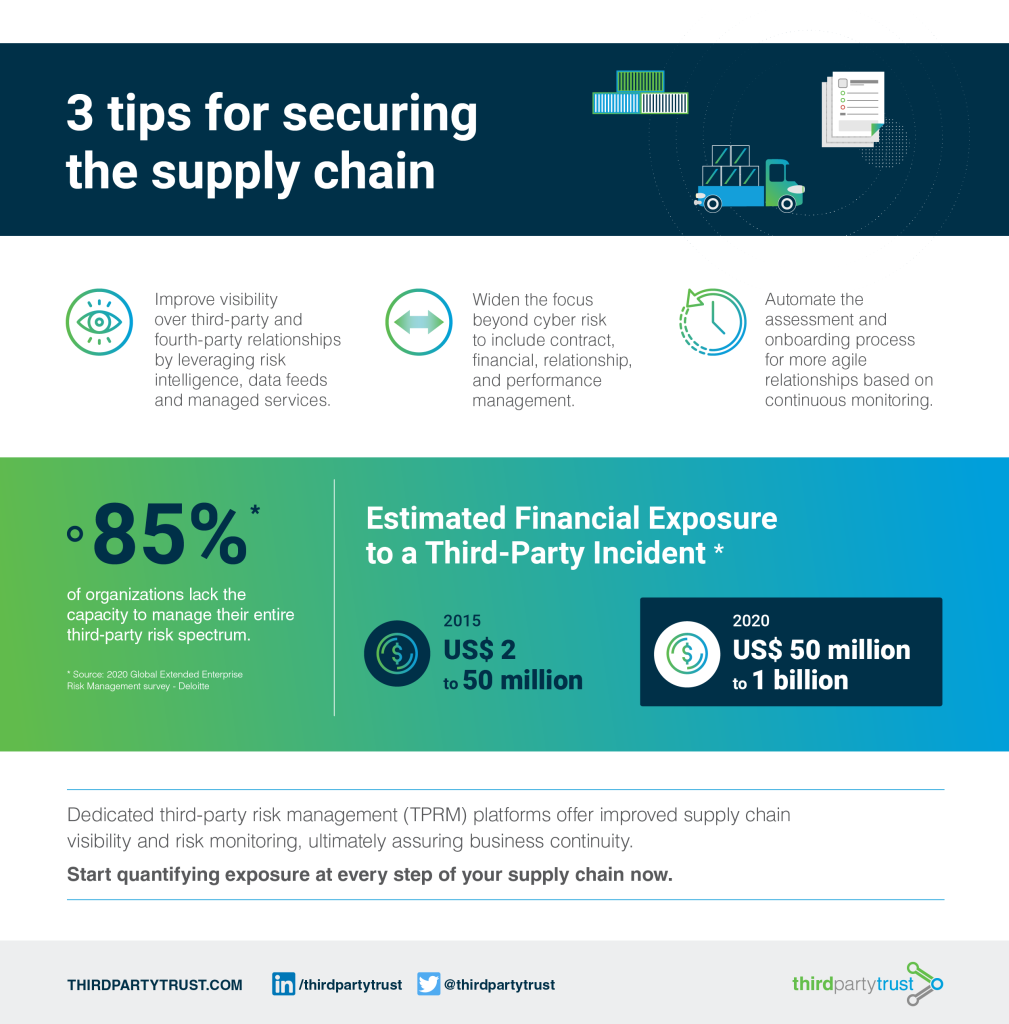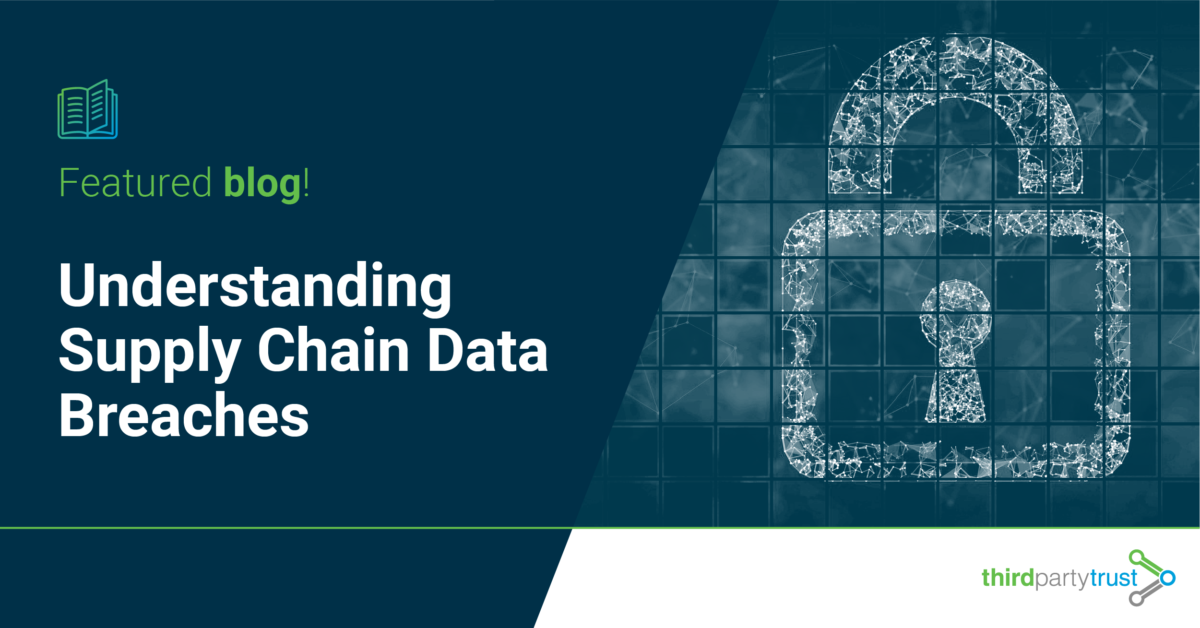Understanding Supply Chain Data Breaches in the Aftermath of SolarWinds
While the scale of the recent SolarWinds breach took everyone by surprise, third-party compromises are nothing new. This was just another reminder that we need more visibility and a better understanding of the risks at every step of the supply chain. In this blog we take a look at the different sides of supply chain data breaches and provide 3 practical tips to secure the extended enterprise.
Data breaches caused by third-parties cost millions of dollars every year to companies of all sizes — we’ve made a recap of the costliest settlements here, including Target, Home Depot and Capital One.
What they all have in common is that a key third-party vendor failed to safeguard the data of the impacted organization, which probably could have been avoided with:
- Proper due diligence
- Continuous monitoring based on real-time data feeds and security ratings
- A widened understanding of risk across the extended enterprise
- A consolidated third-party risk management program including all of the above
The different types of third-party compromises and supply chain data breaches
It’s not just just vendors in the traditional sense. Developers, partners, customers, or potential acquisitions are other examples of third-parties that could abuse your services or data, as occurred to Facebook with Cambridge Analytica in 2016. The infamous scandal involved harvested Facebook data of 87 million people being used for advertising during elections.
Third-parties are key to any organizations’ business, providing crucial services like billing, software development or data storage. In this global, connected business landscape, the ultimate goal is not to avoid developing third-party relationships, but to engage with vendors who show a robust security posture.
Third-party supply chain compromises have been happening for years. As opposed to traditional attacks, where attackers compromise the desired target directly, in a supply chain attack, they compromise a supplier of the target. This is mainly due to the fact that the supplier may have weaker security controls, which decreases the risk and cost of the attack.
So how to take the next step to secure the supply chain? This infographic provides 3 practical tips:

As you can see, the tips have to do with extending and widening the focus to other types of third parties and fourth-parties that could be compromised.
What does this mean?
Widening the supply chain security focus means understanding that there’s more to it than assessing vendors, as there are many types of third-parties that can result in a breach. The strategy should also contemplate every potential acquisition and customer relationship that involves the handling of personally-identifiable-information (PII), whether it leads to an internal database or a customer’s database.
Other root causes include phishing, malware, unencrypted data, software vulnerabilities exploitation, and human error. As we’ve seen in the latest Verizon Data Breach Investigation Report, the most common breach methods are cyber attacks (which might not always be highly sophisticated or targeted but rather low effort techniques), and human errors.
Therefore, focusing on supplier security will not cover other types of third-party compromises that can occur.
Bottom line is to educate the entire organization in a holistic approach to third-party risk management, understanding that there are many types of third-party risks that can occur and how to tackle each one of them through a comprehensive TPRM strategy.
The good news? ThirdPartyTrust can help with a complete feature set for TPRM workflow management, security document storage and process automation platform. We get TPRM programs out of email & spreadsheets and accelerate the third-party assessment/questionnaire review process through automation and centralized communication.
To learn more about how ThirdPartyTrust can help you manage third-party risk across your extended organization, request your free trial now:




